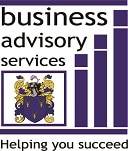When it comes to technology, change is an ongoing process. You can never stay with just one type of computer/software or you’ll just get gobbled up by your more technologically updated competition. Therefore, should the time come for you to change accounting software, you should treat it more as an investment and not just as an expense. Below are some tips to help you maximise returns, minimise cost and make the change as easy and as beneficial as possible for everyone concerned.
Assess Your Needs
Before anything else, you should first find out the needs of your company or your organisation. This is perhaps the most important step in the entire process of preparing your organisation for a change in accounting software because it will determine the type of the accounting software you’ll get and the kind of functionality and scope you’re looking for.
Set Your Goals
This step will just carry over from the previous step [Assess Your Needs]. Make sure that your goals are realistic too. If you’ll be changing your software on a very limited budget, don’t aim to find one that does every single step of the accounting process. If it looks like you can’t afford the latest and most sophisticated software, look for one that will satisfy several or most of the steps of the accounting process in your organisation.
Consult Both the Accountants and the Techies
While you’ll most probably be talking to your organisation’s accountants about the entire change, it’s also a good idea to coordinate with your IT personnel. Because your new software will necessarily run on a computer, you have to ask them whether it can be integrated into your organisation’s current system and, if the new software won’t, what modifications will have to be done. Also, ask whether the change will allow your organisation to comply with industry standards.
Create a Panel with Everyone Represented
Of course you’ll be creating a panel to screen your new software prospects. But instead of the usual mix of top-level bosses and management heads, throw in some of your accountants and some of your computer systems people. Aside from cost considerations, you should also take note of their input because they’d be the ones to notice certain aspects of the prospective software like usability and scalability – important factors that your managers might not notice or, even worse, not even know about.
Be Formal about Your Inquiry
The size of your organisation doesn’t matter. Whether you’re going to ask for a quote or are soliciting a bid, be as formal as possible when corresponding with a prospective software provider. When they know that they’re dealing with an actual and legitimate business, they’re more likely to give you the business edition software and not just the usual consumer level stuff. When you’re talking about software that your organisation will be using across several computers for the next several years, that sort of consideration will matter.
When changing software or anything in your operations, for that matter, always remember to take input from several levels and to always consider how the software will work, not just how much it costs. In the long run, you’ll want a piece of software that’s modifiable and future-proof rather than one that was just cheap at the beginning.
